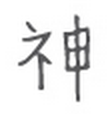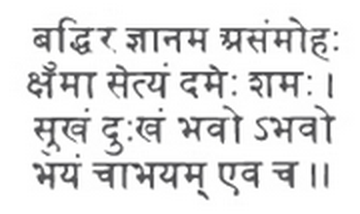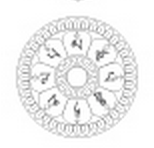
































The Chakras are invisible energy centers of the body interfacing between the physical and subtle worlds. Chakras are centers of consciousness. They are positioned along the spinal cord from the base of the spine to the top of the head.

Muladhara Chakra (Base) Color: red.
Center of survival and groundedness, the densest form of primal energy and the foundation of all human knowledge, located below the genitals.

Swadhisthana Chakra (Sacral) Color: orange
Center of communication and sensitivity, it is the source of all emotional needs and the ability to respond to them, located above the genitals.

Manipura Chakra (Navel) Color: yellow.
Center of energy discipline and endurance. This chakra gives us the ability to perform at high levels of physical and mental stamina, located near the navel.

Anahata Chakra (Heart) Color: green.
Center of love, compassion and forgiveness, and hope, this is also the seat of the ego and center of self esteem, located middle of chest.

Vishuddi Chakra (Throat) Color: blue
Center of creative expression and communication, personal identification and individual will are formed here, located in the throat.

Ajna Chakra (Third Eye) Color: indigo.
Center of super consciousness and psychic intuitive senses, this insight transcends the five senses, time and space, located between the eyebrows.

Sahasrara Chakra (Crown) Color: all colors.ss
Here enlightened ones abide in unity with the self. This is where the need to understand the completeness of life and the universe is formed. Self realization and enlightenment reside here, located above the crown of the head.

Ganesha
The Hindu god known as the remover of Obstacles.

"Asato Maa" (from the Brihadaranyaka Upanishad)
O Lord please lead me from the unreal to the real.
Lead me from darkness to light. Lead me from death to immortality. May there be peace, peace and perfect peace.

"Taittiriya Brahmana" (from the Taittiriya Brahmana)
Fire is established in my speech.
Speech in my heart. My heart in me.
Myself in the immortal, the immortal in Brahman.
Air is established in my breath.
My breath is in my heart. My heart in me.
Myself in the immortal, the immortal in Brahman.
The sun established in my eyes.
My eyes in my heart. My heart in me.
Myself in the immortal, the immortal in Brahman.
The moon is established in my mind.
My mind in my heart. My heart in me.
Myself in the immortal, the immortal in Brahman.

Intellect, knowledge, freedom from delusion, Patience, truth, self-restraint, tranquility, Pleasure, pain, birth, death, And fear and fearlessness. (Bhagavad-Gita)

That intellect which knows when to act and when not to act, what is to be done and what is not to be done, what is to be feared and what is not to be feared, along with knowledge of the nature of bondage and liberation, O son of Prtha, is sattvic. (Bhagavad-Gita)

Patience Wedge (Bhagavad-Gita)
Indifferent to pain and pleasure, patient and enduring.

"Prabhujee" (written by Ravi Shankar)
Oh Master, show some compassion on me
Please come and dwell in my heart
Because without you, it is painfully lonely
Fill this empty pot with the nectar of love
I do not know any Tantra, Mantra, or ritualistic worship
I know and believe only in you!
I have been searching for you all over the world
Please come and hold my hand now.
Tamil is written in a beautiful syllabic script (called Grantha script) derived from the Brahmi script in which symbols stand in for syllables. Tamil is one of the Dravidian languages, a family of languages concentrated in southern India, Sri Lanka and certain areas of Pakistan, Nepal, and eastern and central India.

Sacred "Tiru"

"OM MANI PADME HUNG"
The meaning of the Mantra by His Holiness the Dalai Lama:
"Purity must be achieved by an indivisible unity of method and wisdom, symbolized by Hung, which indicates indivisibility...Thus together these syllables mean that in dependence on the practice of a path which is an indivisible union of method and wisdom, you can transform your impure body, speech, mind into the pure exalted body, speech, mind of a Buddha."





Tibetan Melong "The Mirror"
The mirror represents consciousness and the element for space. Whatever appearances arise as reflections, be they beautiful or ugly, inherently good or evil, the mirror passes no judgment on them.

The Ritual Bell
The hand-bell symbolizes the feminine principal in Tibetan rituals. Its sound is regarded as auspicious and is said to drive away evil spirits.

The Thousand Arms of Compassion
The bodhisattva of universal compassion.


The Parasol
A symbol of power representing the ability to arm oneself against the elements.


The Golden Fish
A symbol of good fortune indicating plenitude.


The Treasure Vase
The satisfaction of material wealth-storage- a sign of fulfillment of material wishes.


The Lotus
The symbol of the manifestation of beauty and mental purity (the ability to rise above)-for although it has its roots in the mud of ponds and lakes, it raises its flower in immaculate beauty above the surface of the water.


The Wheel
The wheel expresses completeness and perfection, as it has no beginning and no end.


The Right-Turning Conch Shell
The oldest ritual object-it has stood for femininity and as a musical offering-it has come to represent the fame of Buddhist teachings.


The Glorious Endless Knot
A very auspicious symbol representing many things-in its most simplistic form, it represents a connection between the giver and the recipient-indicating the eternal connection of the past to the future. It is also representative of the infinite knowledge of the Buddha-all things in the present and future are tied to the past in the glorious endless knot.


The Victory Sign
A sign of victory over all disagreements, disharmonies and hindrances-a victory over ignorance and ultimately the attainment of happiness.

The Cross
The Cross is one of the oldest and most universal of all symbols. It appeared on Indian cave walls and in Egyptian tombs long before the birth of Christ. The Cross is said to protect against evil and is a source of strength and faith.

Flames
In Tibetan Buddhism, flames represent either flames of protection (from negative influences) or flames of purification.

The Heart
The heart represents the most intimate central point of the human being, from where man communicates with other people and the Divine Beings. It is an emblem of love, friendship, intelligence and courage.

The Star of David
The six pointed Star of David, a hexagram, is the most common and universally recognized sign of Judaism originating from the Shield of David.

Crescent and Star
The ancient celestial symbols of the crescent moon and star represent celestial gods and goddesses, particularly those representing the Sky, the Moon, the Sun and Venus.

The Skull
The skull is a reminder that all things will pass, that there is wisdom in living in the face of such mortality, and, therefore, we should live fully and mindfully.
As seen on Law and Order: SVU, this protective emblem is available in sterling silver and 10K gold
